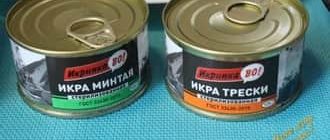Definitions
Sushki are hard ring-shaped bakery products made from wheat dough. They are a Russian national dish. The classic recipe includes flour, water, salt and eggs. On store shelves you can find dryers with various additives: poppy seeds, sesame seeds, vanilla, etc. Previously, the product was prepared as follows: the dough was cut into thin strips, which were twisted into rings, and then immersed in boiling water. The product that floated to the surface was removed from the water and placed in the oven, where it was dried for a certain time. This process determined the name of the product. Today, dryings are no longer boiled in boiling water, but are doused with hot steam.
Drying
Bagels are native Russian bakery products in the shape of a ring, the raw material for the production of which is wheat flour. The first mention of the product in written sources dates back to the 17th century. But there is an assumption that bagels appeared much earlier. Initially, the bakery product was called “ovaranka”, derived from the verb “to scald”. During the gradual transformation of the term, its modern version was fixed in the language. The preparation technology and composition of the bagels are similar to the drying ones, with the only difference being that the former are removed from the oven earlier. Traditionally in Rus', the delicacy was served with tea. At the beginning of the 20th century, in regions where wheat was not grown, bagels were considered an outlandish treat, which was often brought from fairs as gifts for children. At that time, these round pieces were sold strung on twine. Today, bagels are packaged in bags. On sale you can find poppy, sugar, mustard, butter, vanilla and other variations of the product.
Baranki
What does the bagel have to do with it?
It is believed that the word “bagel” and the cooking technology itself appeared in Rus' thanks to the Belarusians, while bagels were spread by Eastern European Jews living in Ukraine. Thanks to this fact, for a long time bagels and dryers on store shelves were called “Moscow”, and bagels “Odessa”. But the technology for making bagels still requires them to be scalded. True, the dough for bagels is made more rich and loose, and the products themselves are flavored with a variety of sprinkles or fillings. Sometimes such ingredients are immediately added to the dough.
Such a characteristic feature of this type of baked goods as fluffiness and looseness is reflected in the name - bagel. The word “bubel” without a diminutive suffix has always existed in Slavic languages, and in Ukrainian too. It meant the sound made when bubbles burst. To bubble, that is, to pout, bubble. Bagels became widespread in Russia only in the 19th century, although in Europe they have been known since the beginning of the 17th century under the name “bagel” - stirrup, but this in no way detracts from the importance of the Jews in their invention. Quite the contrary, there is a legend that the first bagel was baked by a Jewish pastry chef from Vienna as a sign of gratitude for the victory over the Turks and presented to the king of the Polish-Lithuanian principality, Jan Sobieski, who was a true connoisseur of horses. So, the baked goods with a stirrup-shaped hole in the middle began their victorious march around the world.
Comparison
First, let's compare baked goods by size. As a rule, bagels are several times larger than dryers. The diameter of the latter is only 2-4 cm. Accordingly, the thickness of their ring is an order of magnitude smaller. The diameter of the bagels can reach up to 8 cm. They are much thicker and more magnificent than their small counterparts. If in a kilogram bag of bagels you can count about 25 products, then in the case of dryers there will be about 100. The difference is obvious.
Another difference between sushki and bagels is the duration of their preparation. The latter are removed from the oven a little earlier, so they turn out softer and moister. The water content in them is 14-17%. The shelf life of this product is not too long (25 days). The dryers stay in the oven for a longer time, due to which they become hard and crispy. They contain from 8.5 to 12% water. The products are sometimes called “canned bread”, which is explained by their considerable shelf life. The product can be eaten for 45 days.
Let's summarize what is the difference between dryers and bagels.
| Drying | Baranki |
| Diameter is 2-4 cm | Diameter can reach up to 8 cm |
| Modest ring thickness | Much more magnificent |
| Spend a lot of time in the oven | Removed from oven earlier |
| Comes out firm and crispy | Softer product |
| Water content ranges from 8.5 to 12% | Contains up to 17% moisture |
| Shelf life is 45 days | Usable for 25 days |
The history of the appearance of bagels
But lamb is our Russian product, of Slavic origin and the Belarusian city of Smorgon is considered its homeland. The first mention of them is found in the Decree of Peter 1 (1725), in connection with the establishment of prices for them. The name came to them from the word “scald” - they used to be called “scalds”. Before being sent to the oven, the dough rolled into a ring was boiled with boiling water. Now the technology has changed, and the steering wheels are exposed to steam. The humidity of the bagels is 14-19%.
Sushki , like bagels, are an original Russian product. They have even lower humidity, almost close to breadcrumbs: from 9 to 13%%.
The benefits of bagels, bagels, and crackers are commensurate with the benefits of crackers. Table 1 below shows the content of the main elements and calorie content of the products.
Incomparable bagels with poppy seeds or soft bagels according to the USSR GOST recipe from old masters
So we have reached the classics of the Soviet years. We are preparing a rope on which we will string those same rings.
"Bagels with poppy seeds"
Components
For the dough you will need:
- Wheat flour – 300 g.
- Water – 140 g.
- Dry tremors – 1 tsp.
For the test:
- Flour – 700 g.
- Water – 200 ml.
- Sugar – 120 g.
- Salt – 10 g.
- Margarine – 80 g.
- Dry poppy seed – 100 g.
Preparation
Opara
- In a deep bowl, mix flour and yeast.
- Add water step by step and knead into a stiff dough.
- Mix the dough mixture until smooth, form a ball, cover and leave in a warm place for 4-5 hours.
- Sometimes you need to look to see if wrinkles and bubbles appear. If these signs are present, then the dough is ready.
Calorie content and composition
Dried foods are classified as high-calorie foods. Per 100 g of product there are:
- 372 kcal;
- 11.3 g protein;
- 4.4 g fat;
- 70.5 g carbohydrates.
In addition to the above components, drying contains a rich list of useful vitamins and microelements, including rare ones, namely;
- vitamins of group B (B1, B2, B5, B6, B9) and E;
- calcium;
- phosphorus;
- zinc;
- copper;
- manganese;
- magnesium;
- copper.
Benefits and harms
Like any other product, drying agents have beneficial and harmful properties. The amount of the above microelements in the composition makes them certainly useful. Suffice it to say that consuming 50 g of dried fruit per day provides the body with the daily norm of manganese, and 100 g – with the daily norm of copper. B vitamins are good for the nervous system, skin and hair, E is a strong antioxidant.
Being a product of long-term storage, drying bags are extremely useful and practical in preparation for travel, hikes, months-long expeditions, shifts, etc.
When talking about harm, first of all we should indicate the measure. Eating dry foods alone should not expect a positive effect on health and body shape. In addition, if you have gastrointestinal diseases or diabetes, this product is strictly contraindicated.
The “unhealthy” category includes drying products containing group E preservatives, since we are no longer talking about naturalness. Information about the composition can always be found on the packaging.
Dryers, bagels, bagels - history, recipe, equipment
From time immemorial in Rus', wealth in the house was determined by the amount of bread. The walls were decorated with flour products. Sushi, bagels and bagels were the most popular. In our review today we will talk about how they appeared, what recipes were used by chefs in the past, and what is preferable for modern bakeries. And, of course, we’ll talk about the necessary equipment for baking baking.
Drying
Initially, drying was a dough product intended for preparation for the winter. To prepare it, they used a specially kneaded dough that has not changed to this day. If the finished product breaks into four parts when pressed, then the ingredients were selected in the correct proportion.
Professionals know that in order for the dryers to turn out crumbly and tasty, you need to take a steep, slightly sour dough. The classic recipe requires 20 percent sugar. Compliance with all rules and regulations of mixing can significantly increase the shelf life of products. This feature made them indispensable not only for home decoration, but also for long military campaigns.
Modern bakeries produce the following types of dryers: lean, sweet, with the addition of poppy seeds and fruits, puff pastry. Moreover, the latter are served as a snack with beer.
Bagels
A bagel is not just a traditional Russian flour product. It can rightly be called a symbol of our culture. However, unlike sushi, bagels came to us from Jews. As evidenced by many historical facts. The first mention dates back to 1616 and is associated with the victory of the Polish people over the Turks. A baker from the city of Vienna decided to congratulate the king and presented him with a stirrup-shaped bread product as a gift. Thus symbolizing the ruler’s passion. The king liked the gift. Since then, the popularity of the bagel has only grown, covering Europe and America, where they still adhere to the classic recipe using flour, water and yeast.
The word “bagel” itself came to us from the Ukrainian language and is literally translated as “bubble”. At the same time, it is rooted in our language, which is why it is considered not borrowed and is even found in literary works of the Golden Age. The modern bagel has undergone significant changes compared to its ancestor. Today it is the only pre-cooked bread product. This preparation gives the yeast dough its stickiness and softness. After dipping in boiling water or milk, the bagels are placed on a baking sheet, brushed with a mixture of milk whipped with egg yolk and baked in the oven until a characteristic blush appears. The bagels are ready when they make a hollow sound when tapped.
Russian bakeries produce a huge number of types of bagels: with poppy seeds and cinnamon, raisins and sesame. There are even bagels with onions. And how many dough preparation options are available to bakers: puff pastry, butter, airy, fried – and each is perfect for making this popular product. It is enough to buy an oven for a mini-bakery with the appropriate functionality.
Baranki
The first bagels (or “ovarankas”) appeared in the Belarusian city of Smorgon. They were prepared from scalded dough, previously twisted into ropes. They got their name for their resemblance to a ram's horn. Having spread throughout Russia, they competed with Ukrainian bagels for a long time.
Surprisingly, in Ancient Rus' the word “baranok” was masculine and used in the singular. The person who produced this type of bread was called a lamb-maker.
In modern stores you can find a variety of varieties - lean, egg, with poppy seeds, sugar or fruit. In this case, the dough must be wet, dietary (with a minimum sugar content and without fat), which means it is suitable for those who are watching their figure or need special nutrition.
Production and equipment
In Tsarist Russia, the production of sushi, bagels and bagels was carried out by specialized bakeries, which had a shop separated from the workshop by a glass display case. The buyer could not only choose the type of product he liked, but also evaluate its quality. Ovens, the necessary equipment for the production of small baked goods, were very similar to modern ones. And the recipes were taken mainly from classic, originally Russian ones.
Making bagels has always been a lucrative business, so it's a great way for modern bakeries to increase their income. Ruddy, aromatic sushi, bagels and bagels are present on the table of almost all Russians. At the same time, high profitability is ensured without large material costs. The production process of a modern bakery of any size is fully automated. He practically does not need supervision and control. However, it is worth taking a very responsible approach to equipment, choosing only high-quality equipment for a mini-confectionery from manufacturers that have proven themselves in the world market. The basic set includes: flour sifter, dough mixer, dough divider, proofer, baking oven.
If you want to open a small bakery, don’t hesitate. The main thing is to entrust this to professionals so that they can calculate all possible risks. First of all, you can’t do without a good business plan, where all the nuances will be taken into account. Next is the staff. It is worth hiring bakers and confectioners with special education. The premises purchased or rented for production must comply with all sanitary standards. And the last thing is sales. You can open a store at a bakery, or find buyers among the owners of large retail chains.
Today this line of business has a low level of competition. Accordingly, it is not only profitable, but also relatively stable. For a product to be successfully promoted on the market, it must be tasty and of high quality. And don’t forget about the variety of assortments.
Sushi, bagels and bagels have reached modern stores after a journey of more than a century. They acquired a new look and received different fillings. They have become a popular product not only in Russia, but also in Europe, neighboring countries, and America.
If you want to plunge into the baking business, but don’t know where to start, contact our company. We offer a wide range of services for its opening and maintenance. Also on our website you will find favorable conditions for purchasing bakery equipment on credit.











